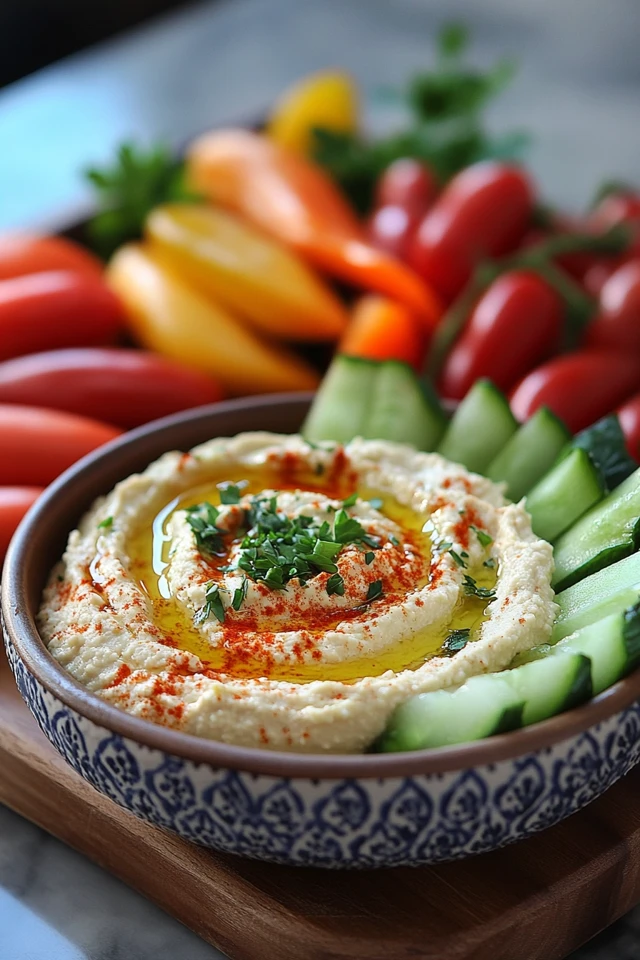Introduction
Delight in the vibrant and wholesome goodness of the Hummus & Veggie Platter: Colorful & Nutritious! This enticing appetizer brings together creamy, flavorful hummus with an array of fresh, crisp vegetables, creating a visually stunning and nutritionally balanced snack that’s perfect for any occasion. Whether you’re hosting a party, preparing a healthy lunch, or seeking a satisfying snack, this hummus and veggie platter offers both elegance and simplicity in one delightful package.
Hummus, a Middle Eastern staple, is not only delicious but also packed with protein, fiber, and essential nutrients, making it a powerhouse dip for your veggies. Coupled with a rainbow of colorful vegetables, this platter not only pleases the palate but also adds a burst of color and variety to your table. In this comprehensive guide, we’ll explore the benefits of a hummus and veggie platter, provide a detailed recipe, and share tips and variations to customize it to your liking. Let’s embark on a journey to create a colorful and nutritious hummus and veggie platter that everyone will love!
Why Choose Hummus & Veggie Platter?
Opting for a Hummus & Veggie Platter offers a multitude of benefits that cater to health, ethical, and culinary preferences. Here’s why this platter should become a staple in your meal planning:
Health-Conscious Choice
- Nutrient-Rich: Hummus is an excellent source of plant-based protein, fiber, vitamins, and minerals, while vegetables provide essential vitamins, antioxidants, and dietary fiber.
- Low in Calories: This platter is a low-calorie option that doesn’t compromise on flavor or satisfaction, making it ideal for those managing their weight.
- Heart-Healthy Fats: The tahini in hummus provides healthy monounsaturated and polyunsaturated fats, which are beneficial for heart health.
- Antioxidant Properties: Fresh vegetables are loaded with antioxidants that help combat free radicals, reducing inflammation and supporting immune function.
Ethical and Sustainable
- Plant-Based: Embracing a plant-based appetizer reduces your carbon footprint and supports sustainable eating practices, benefiting both your health and the environment.
- Cruelty-Free: Free from animal products, this platter aligns with compassionate lifestyle choices and ethical food preferences.
Versatile and Customizable
- Flavor Adjustments: Easily tweak the flavors of your hummus with different spices or herbs to suit your taste preferences, whether you prefer a milder or more robust flavor.
- Ingredient Flexibility: Substitute or add various vegetables, legumes, or grains based on availability and personal preferences, making the recipe adaptable to various dietary needs.
- Serving Options: Serve as a standalone appetizer, part of a larger appetizer spread, or alongside other dishes for added variety and balance.
Delicious and Satisfying
- Balanced Flavors: The combination of creamy hummus and crisp vegetables creates a harmonious blend of flavors and textures that delight the palate.
- Elegant Presentation: A well-arranged platter not only tastes great but also adds visual appeal to your table, making it perfect for entertaining.
Ingredients
Creating a Hummus & Veggie Platter involves a harmonious blend of creamy hummus, a variety of fresh vegetables, and optional garnishes for added flavor and texture. Here’s what you’ll need:
For the Hummus
- Chickpeas: 2 cans (15 oz each), rinsed and drained (or 3 cups cooked chickpeas)
- Tahini: 1/4 cup
- Lemon Juice: 3 tablespoons
- Garlic: 2 cloves, minced
- Olive Oil: 2 tablespoons (plus extra for drizzling)
- Ground Cumin: 1 teaspoon
- Salt: 1/2 teaspoon (adjust to taste)
- Water: 2-3 tablespoons (to reach desired consistency)
For the Veggie Platter
- Carrots: 2 large, cut into sticks
- Cucumbers: 2 large, sliced into rounds or sticks
- Bell Peppers: 2 (any color), sliced into strips
- Cherry Tomatoes: 1 pint, whole or halved
- Celery: 4 stalks, cut into sticks
- Broccoli Florets: 1 cup, blanched
- Cauliflower Florets: 1 cup, blanched
- Radishes: 1 bunch, sliced
- Snap Peas: 1 cup, whole
- Red Onion: 1 small, cut into wedges
Optional Garnishes and Toppings
- Paprika: For a touch of color and flavor
- Fresh Parsley or Cilantro: Chopped, for garnish
- Olive Oil: A drizzle for extra richness
- Sesame Seeds: Toasted, for added texture
- Lemon Wedges: For serving alongside
- Pita Bread or Crackers: As additional dipping options
Ingredient Breakdown
- Chickpeas: Provide the protein and fiber foundation of the hummus, contributing to its creamy texture and hearty flavor.
- Tahini: Adds a rich, nutty flavor and creamy consistency, enhancing the overall taste and texture of the hummus.
- Lemon Juice and Garlic: Infuse the hummus with bright acidity and savory depth, balancing the richness of the tahini.
- Olive Oil: Helps achieve a smooth, velvety texture and adds healthy fats.
- Fresh Vegetables: Offer a variety of textures and flavors, ensuring every bite is crunchy, crisp, and refreshing.
- Optional Garnishes: Elevate the presentation and add subtle flavor enhancements, making the platter visually appealing and tastefully balanced.
Instructions
Preparing a Hummus & Veggie Platter is straightforward and yields a delicious, nutritious appetizer perfect for any occasion. Follow these step-by-step instructions to create a colorful and nutritious platter in about 30 minutes.
Step 1: Prepare the Hummus
- Combine Ingredients:
- In a food processor or high-speed blender, add 2 cans of rinsed and drained chickpeas, 1/4 cup of tahini, 3 tablespoons of lemon juice, 2 cloves of minced garlic, 2 tablespoons of olive oil, 1 teaspoon of ground cumin, and 1/2 teaspoon of salt.
- Blend Until Smooth:
- Pulse the mixture until smooth and creamy. If the hummus is too thick, gradually add 2-3 tablespoons of water, blending until you reach your desired consistency.
- Taste and Adjust:
- Taste the hummus and adjust the seasoning as needed, adding more salt, lemon juice, or garlic to suit your preference.
- Transfer to Serving Bowl:
- Spoon the hummus into a serving bowl and smooth the top with the back of a spoon.
- Garnish (Optional):
- Drizzle a little olive oil over the top and sprinkle with paprika, toasted sesame seeds, and fresh parsley or cilantro for added flavor and presentation.
Step 2: Prepare the Vegetables
- Wash and Cut:
- Thoroughly wash all the vegetables under cold water.
- Peel and cut carrots into sticks.
- Slice cucumbers into rounds or sticks.
- Cut bell peppers into strips.
- Slice radishes and red onion into wedges.
- Blanch broccoli and cauliflower florets by boiling them for 2 minutes and then plunging them into ice water to preserve their color and crunch.
- Cut celery into sticks and leave snap peas whole.
- Arrange on Platter:
- Neatly arrange the prepared vegetables around the hummus on a large serving platter or individual serving bowls for a visually appealing display.
Step 3: Serve and Enjoy
- Serve Fresh:
- Present the hummus and veggie platter on your dining table, allowing guests to dip and enjoy as they please.
- Add Optional Items:
- Include additional dipping options like pita bread or crackers on the side for variety.
- Garnish as Desired:
- Add lemon wedges for squeezing over the hummus or a final sprinkle of fresh herbs for an extra touch of elegance.
Tips and Variations
Enhance your Hummus & Veggie Platter with these helpful tips and creative variations:
1. Customize the Hummus Flavor
- Roasted Red Pepper Hummus: Add 1/2 cup of roasted red peppers to the hummus for a smoky, sweet flavor.
- Spicy Hummus: Incorporate a tablespoon of sriracha or a teaspoon of cayenne pepper for a spicy kick.
2. Experiment with Different Vegetables
- Zucchini: Add thinly sliced zucchini for additional crunch.
- Beetroot: Include roasted beetroot slices for a pop of color and earthy sweetness.
3. Incorporate Superfoods
- Chia Seeds: Sprinkle chia seeds over the hummus for added omega-3 fatty acids and fiber.
- Avocado: Add diced avocado to the platter for extra creaminess and healthy fats.
4. Add Protein
- Edamame: Include shelled edamame for an extra protein boost.
- Tofu Cubes: Add marinated tofu cubes for a heartier appetizer option.
5. Enhance Presentation
- Layered Platter: Create layers by placing a bed of greens underneath the hummus and arranging vegetables on top for a visually stunning presentation.
- Individual Servings: Serve hummus in small ramekins surrounded by neatly arranged vegetables for a more elegant presentation.
6. Incorporate Different Dips
- Baba Ganoush: Offer baba ganoush as an alternative dip for variety.
- Tzatziki: Serve a dairy-free tzatziki alongside hummus for a Mediterranean flair.
7. Make It Ahead
- Prep in Advance: Prepare the hummus and cut the vegetables a few hours ahead. Store them separately in airtight containers in the refrigerator until ready to assemble.
- Chill the Platter: Keep the hummus chilled and serve the vegetables at room temperature for optimal freshness and texture.
8. Incorporate Herbs and Spices
- Fresh Herbs: Add fresh dill or mint to the hummus for a refreshing twist.
- Spiced Hummus: Mix in spices like smoked paprika, cumin, or coriander to create unique flavor profiles.
9. Make It Sweet and Savory
- Fruit Add-ins: Include fruit slices like apple or pear for a sweet contrast to the savory hummus.
- Honey Drizzle: For non-vegan options, drizzle a little honey over the hummus for added sweetness.
10. Create a Theme
- Mediterranean Theme: Incorporate olives, artichoke hearts, and feta-style vegan cheese for a Mediterranean-inspired platter.
- Rainbow Theme: Use a variety of colorful vegetables to create a rainbow effect, making the platter more visually appealing and nutritionally diverse.
Nutritional Information
Understanding the nutritional profile of your meals helps you make informed dietary choices. Here’s the approximate nutritional breakdown for one serving of the Hummus & Veggie Platter (serves 6):
Per Serving:
- Calories: 250 kcal
- Protein: 8g
- Carbohydrates: 25g
- Fiber: 8g
- Fat: 12g
- Saturated Fat: 2g
- Sugar: 6g
- Sodium: 400mg
Nutritional Highlights:
- High in Protein and Fiber: Chickpeas in the hummus provide a substantial protein and fiber boost, promoting muscle maintenance and digestive health.
- Healthy Fats: Avocados and olive oil contribute heart-healthy monounsaturated and polyunsaturated fats essential for cardiovascular health and satiety.
- Vitamins and Minerals: Tomatoes, cucumbers, and bell peppers supply vitamins A and C, potassium, iron, and magnesium, supporting various bodily functions.
- Antioxidants: Fresh vegetables and herbs are loaded with antioxidants that combat oxidative stress and support immune function.
Adjusting Nutritional Content:
- Lowering Calories: Reduce the amount of olive oil used in the hummus or opt for a spray oil to minimize fat content.
- Increasing Protein: Add more chickpeas to the hummus or incorporate additional protein-rich vegetables like edamame.
- Reducing Sodium: Use low-sodium salt or reduce the amount of salt in the hummus. Incorporate more herbs and spices to enhance flavor without relying solely on salt.
Conclusion
The Hummus & Veggie Platter: Colorful & Nutritious is a perfect blend of health-conscious ingredients and vibrant, satisfying flavors, making it an ideal addition to any meal plan. This platter not only caters to vegan and gluten-free dietary needs but also provides a wholesome and visually appealing option that supports your health and well-being.
Whether you’re preparing a family gathering, hosting a festive party, or looking for a nutritious snack to fuel your day, this hummus and veggie platter offers versatility, ease of preparation, and endless customization options to suit your preferences. Embrace the rich, creamy textures of hummus with the crisp freshness of vegetables in this delightful recipe that celebrates the best of wholesome and flavorful snacking.
Enjoy the process of blending, chopping, and arranging your hummus and veggies, and savor each bite knowing you’re nourishing your body with wholesome, plant-based goodness. Here’s to creating and enjoying appetizers that bring joy, health, and a burst of color to your table!
Picture Gallery
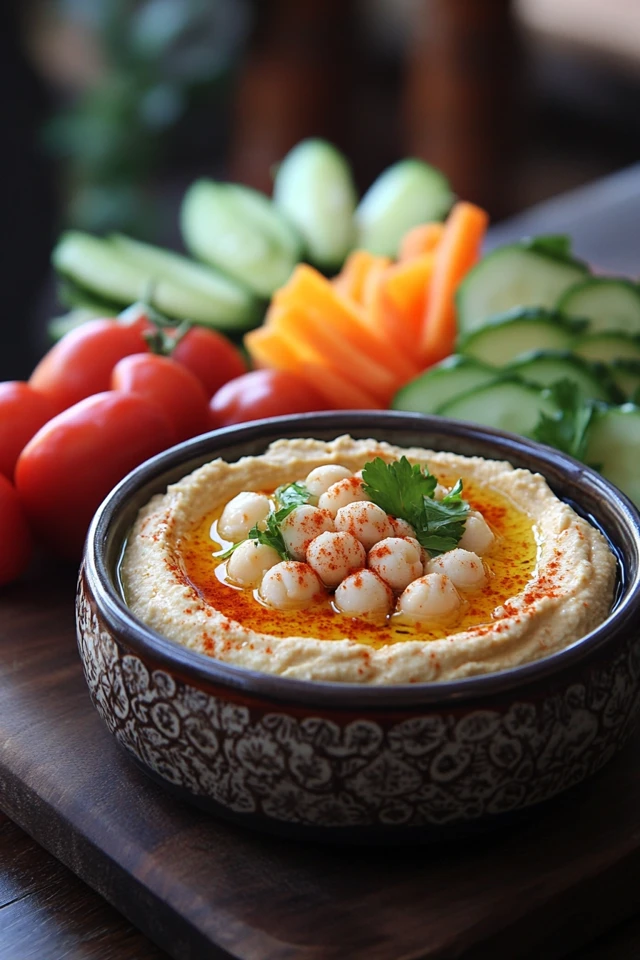
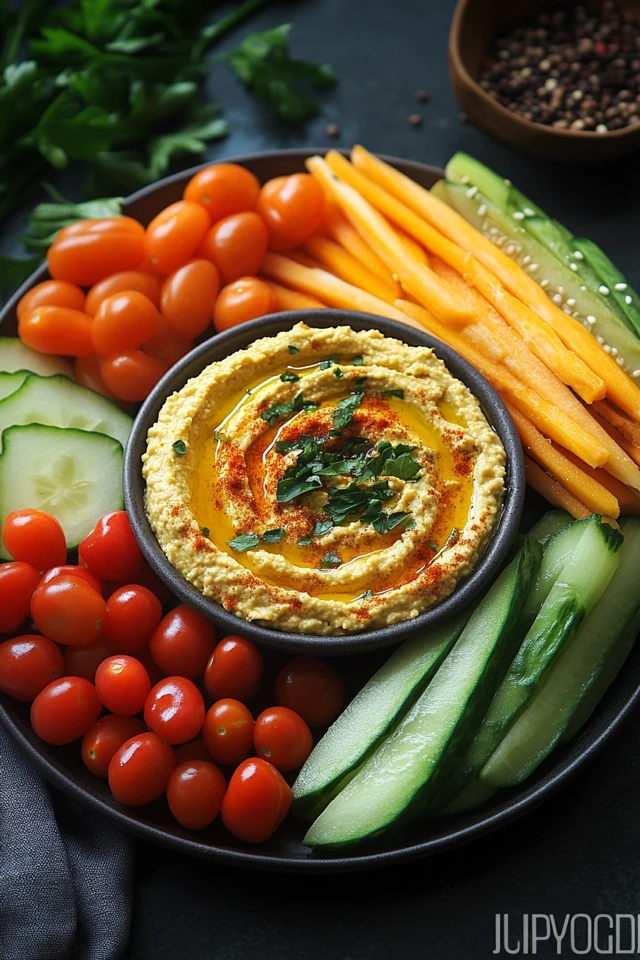
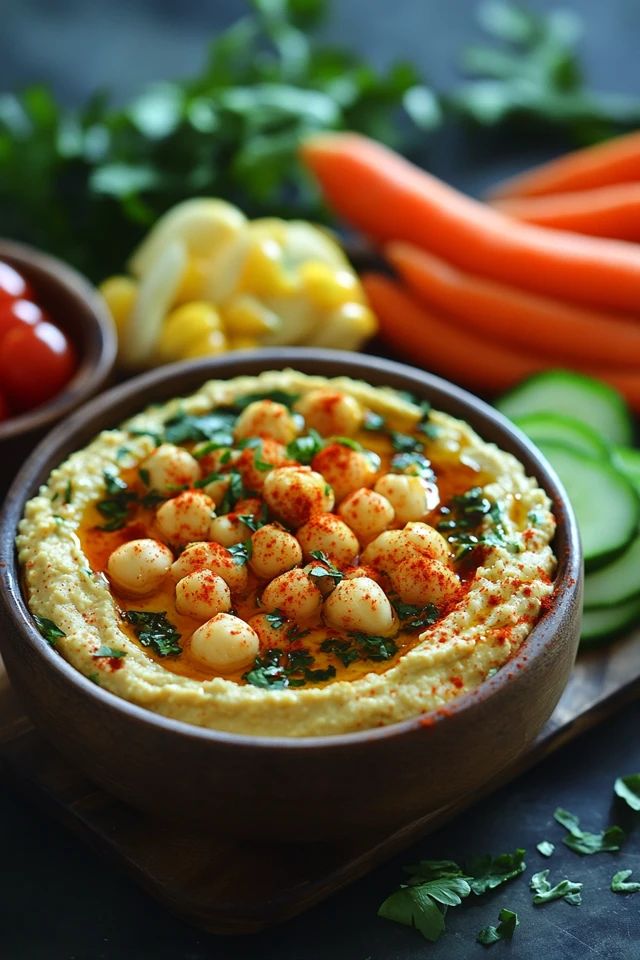
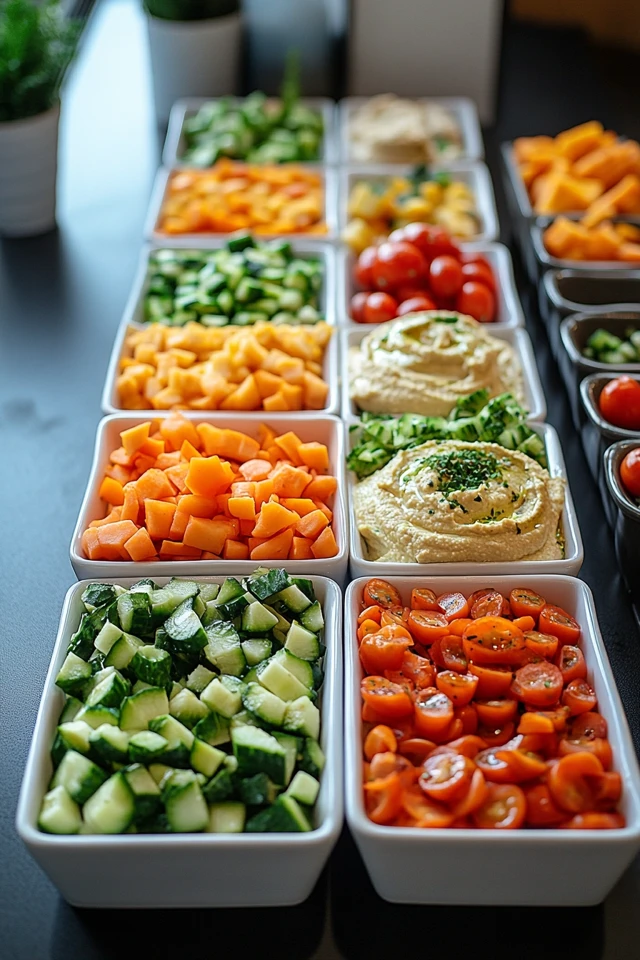
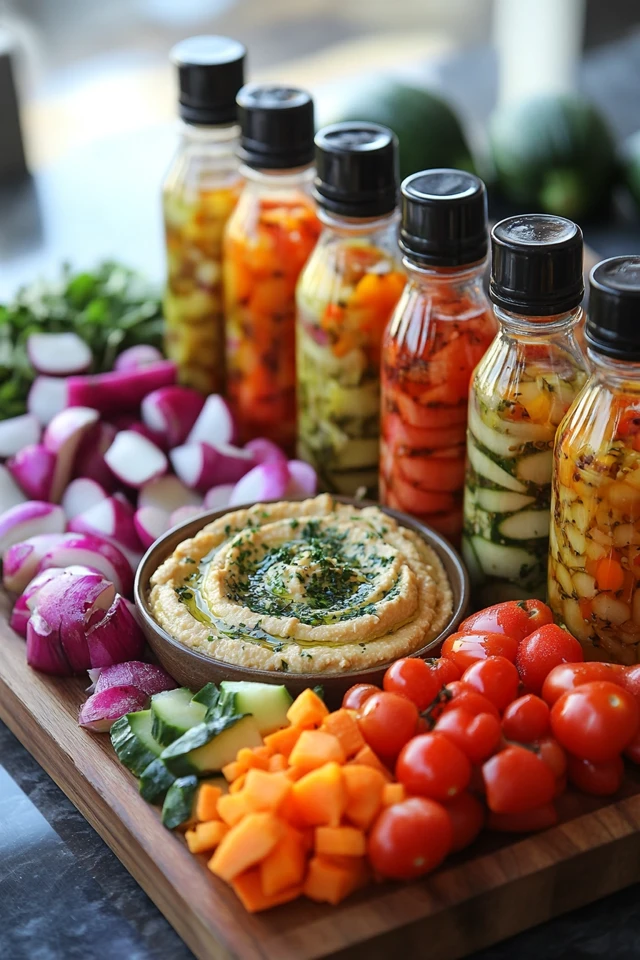
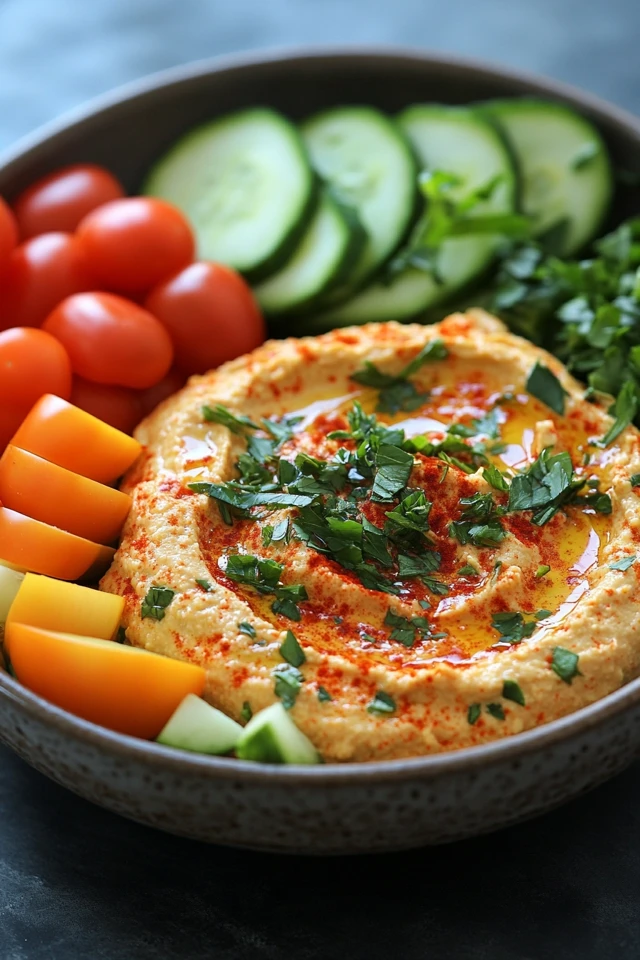
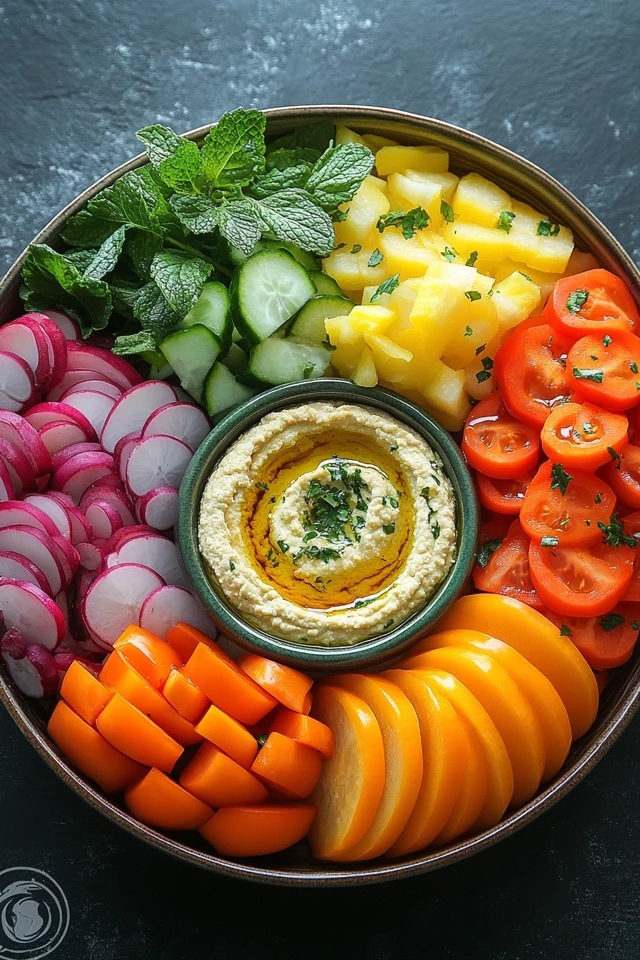
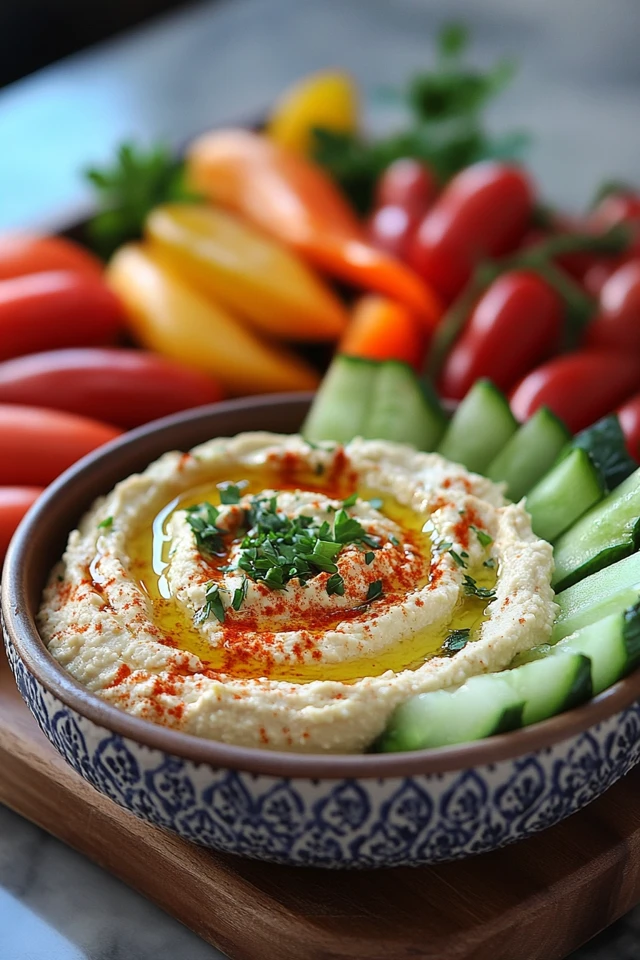
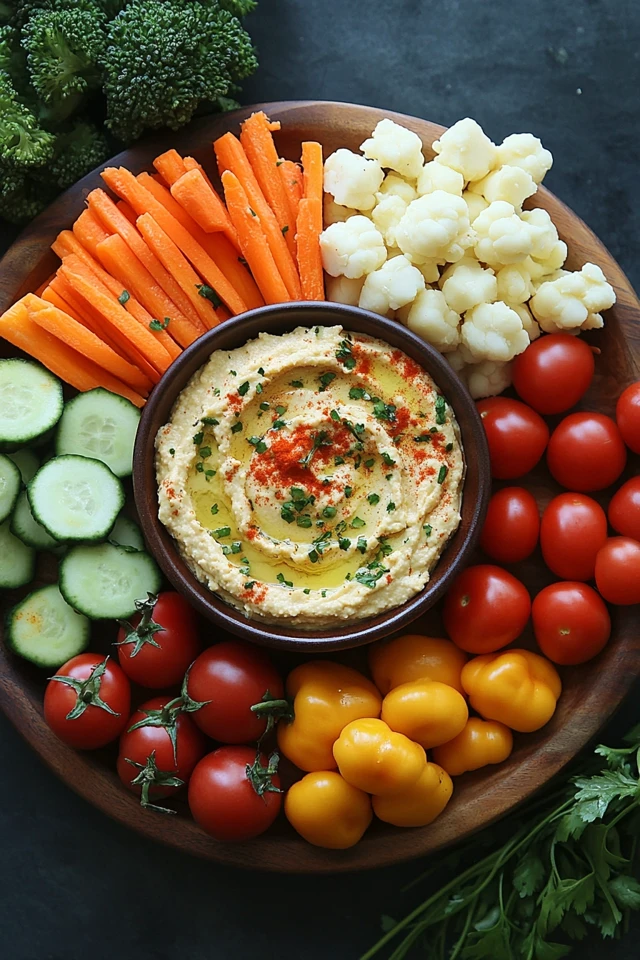
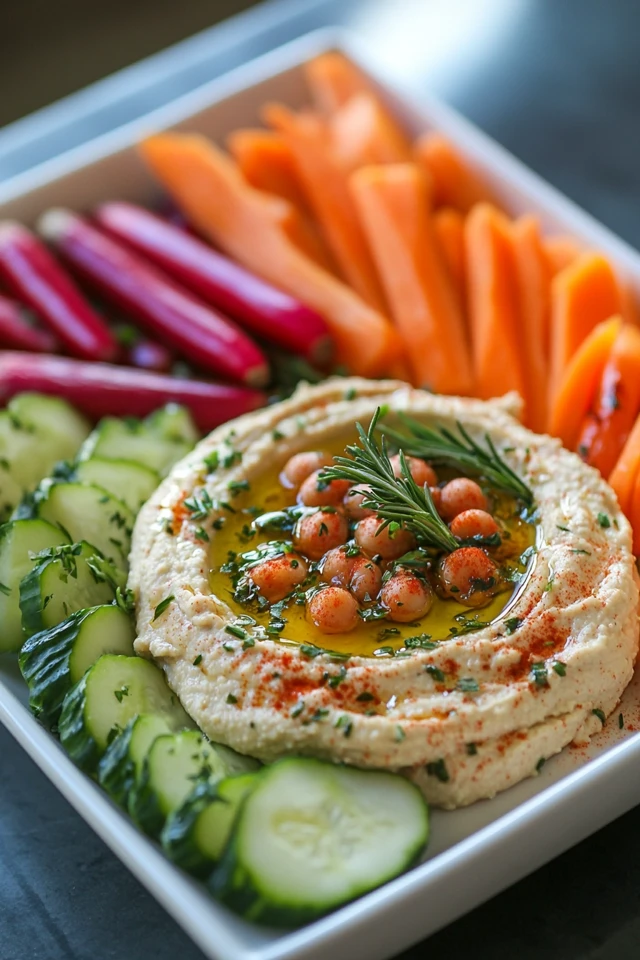
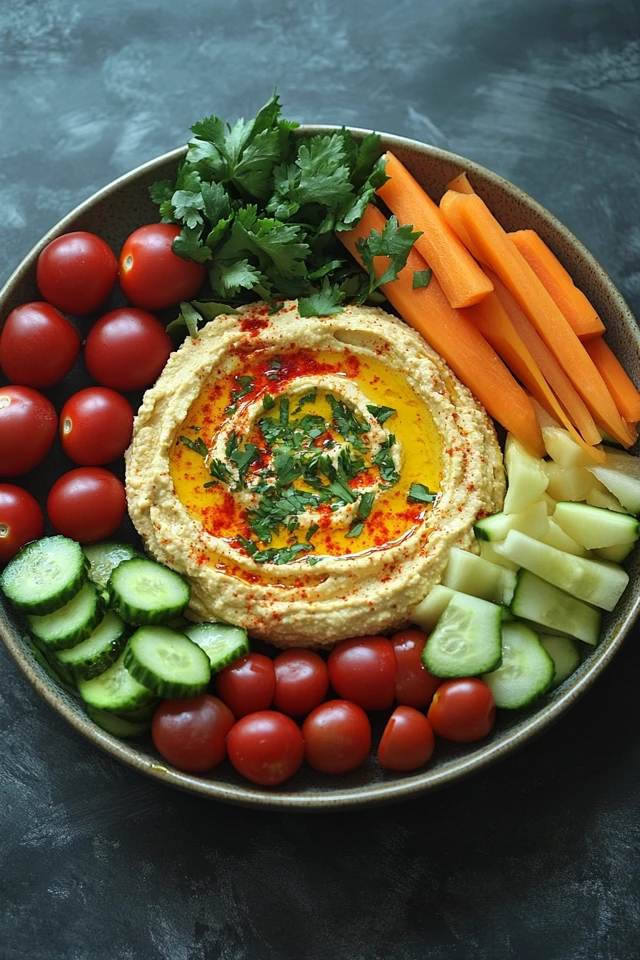
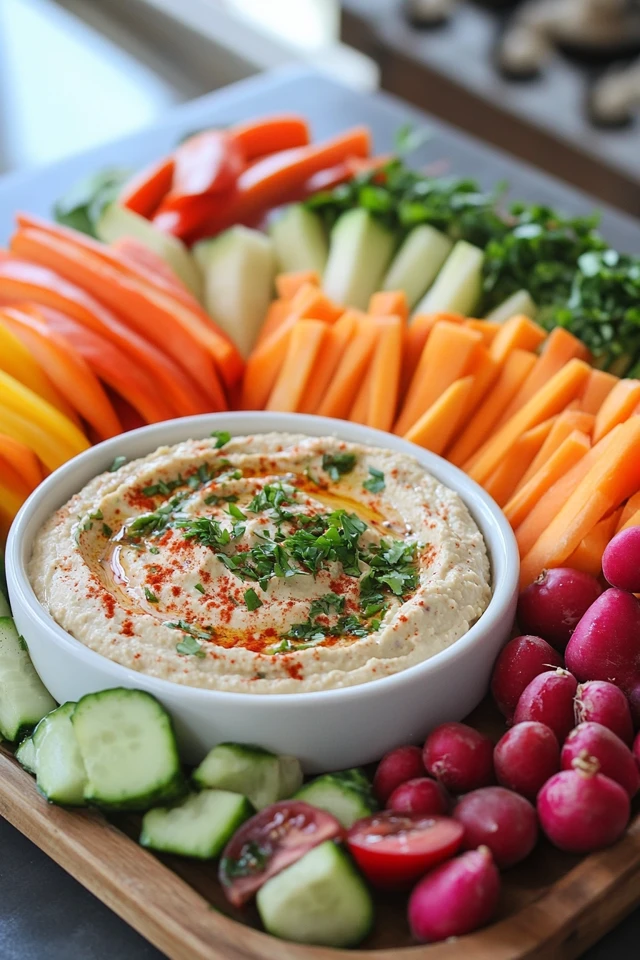
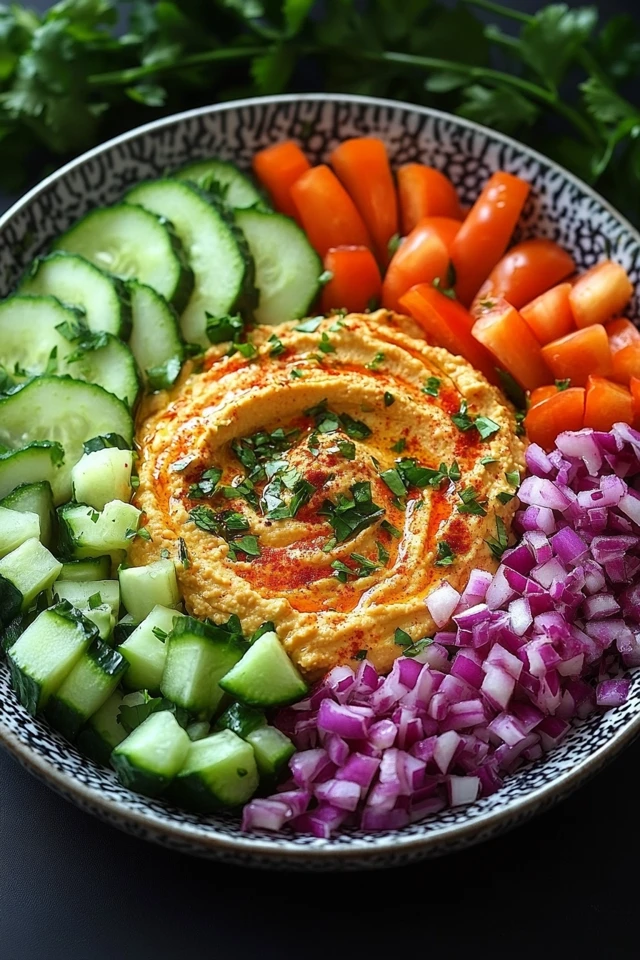
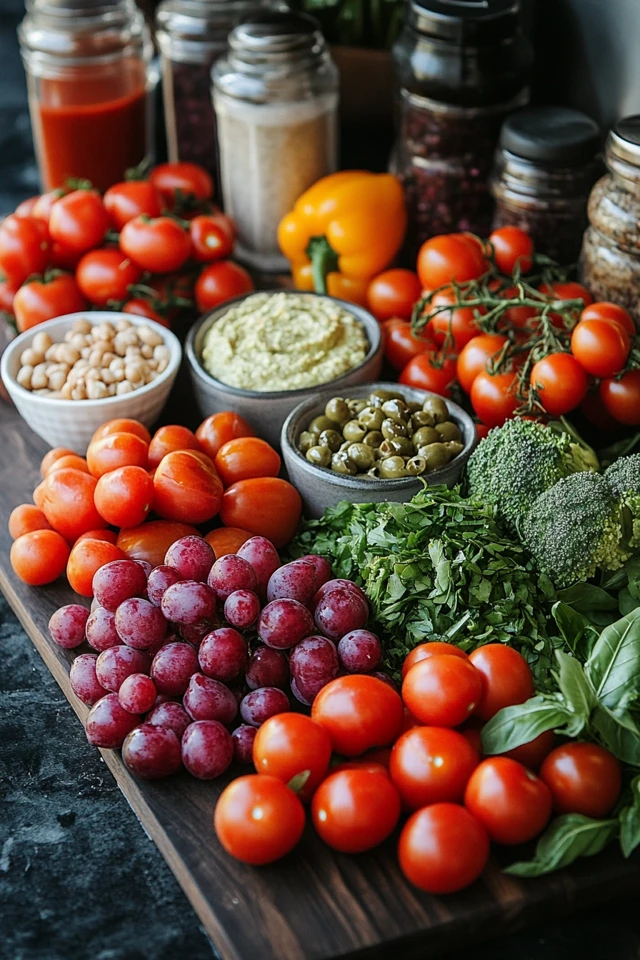
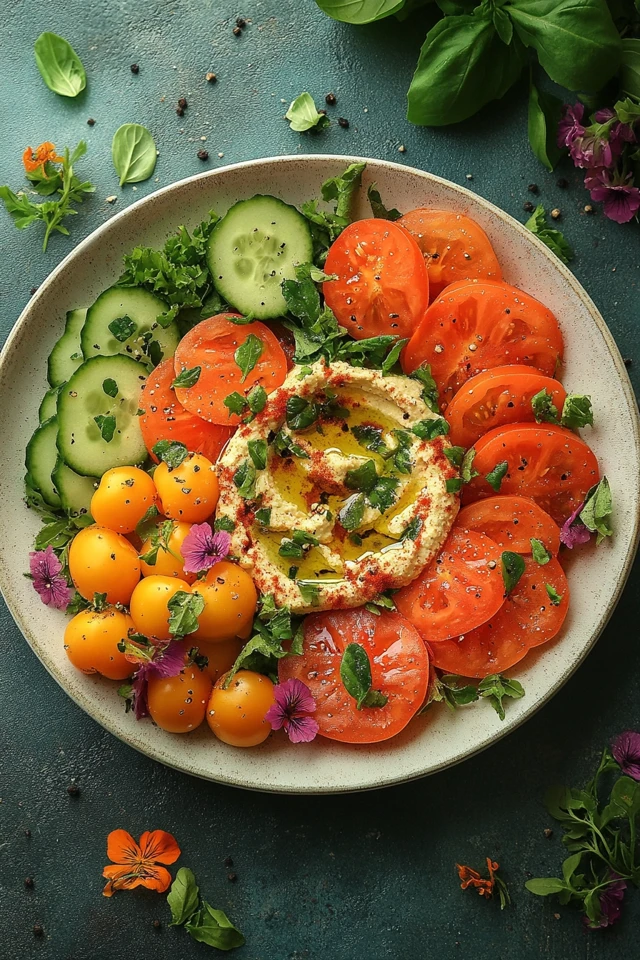
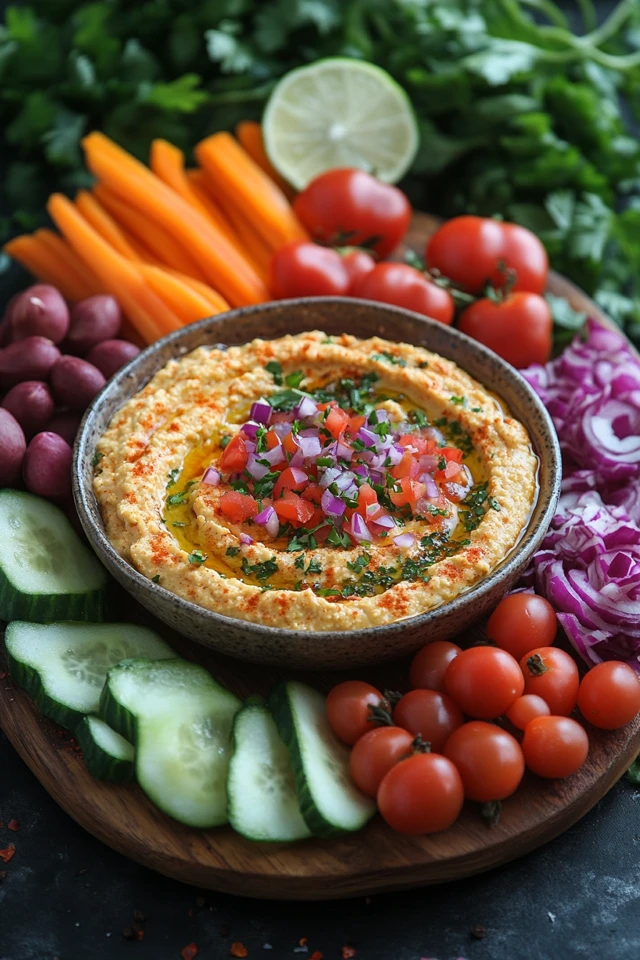
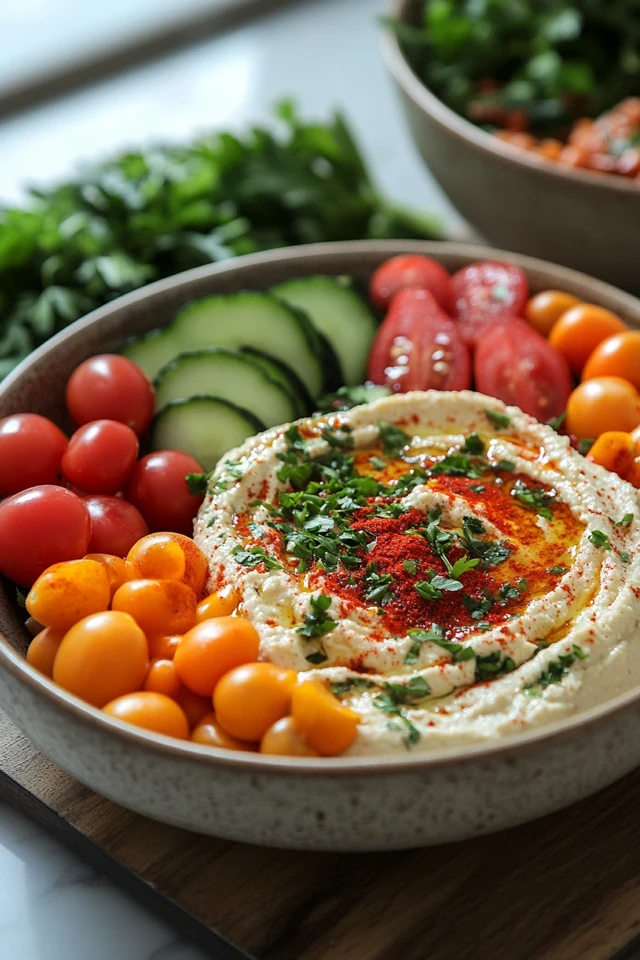
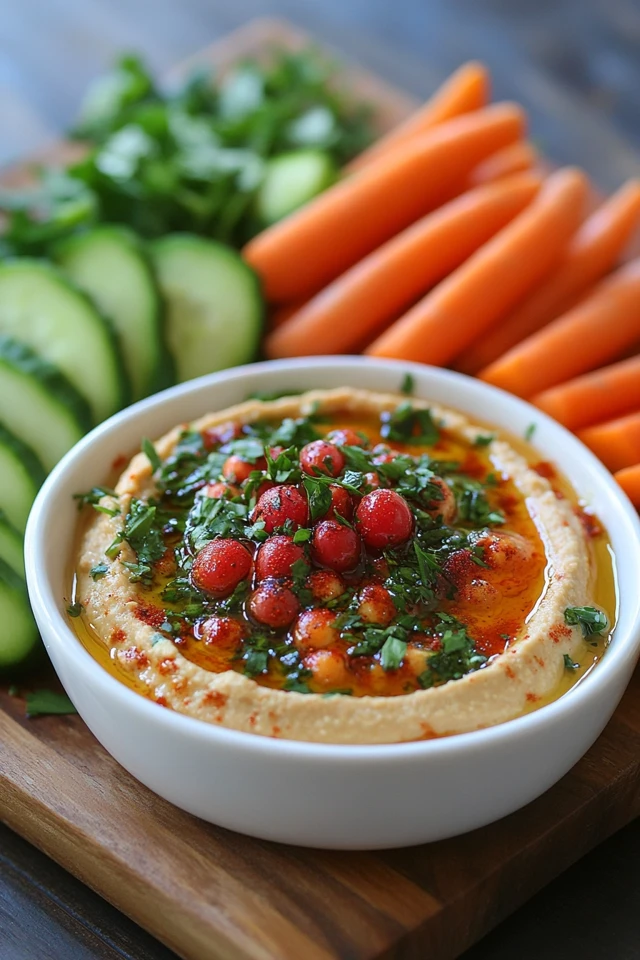
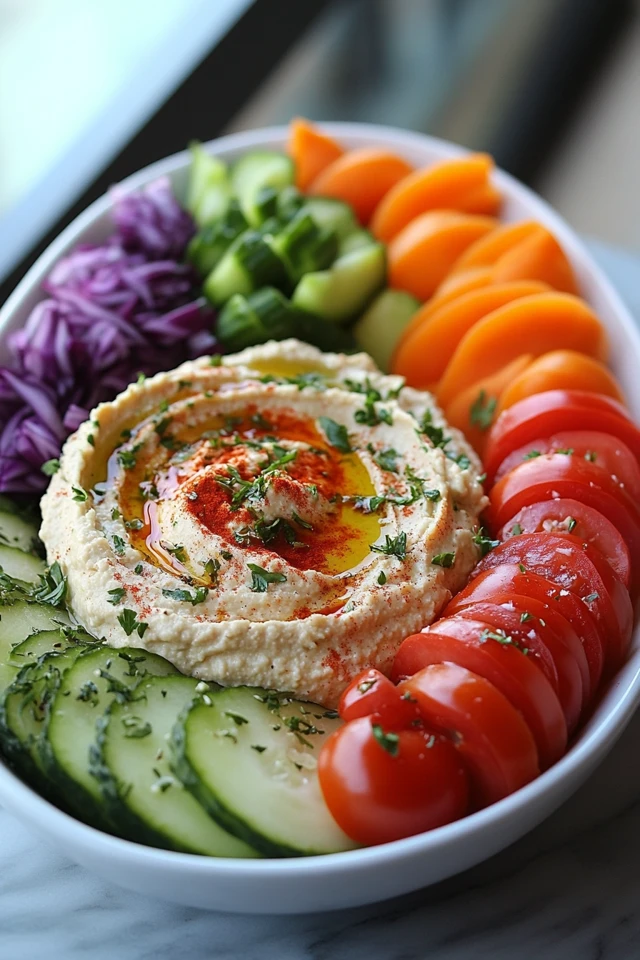
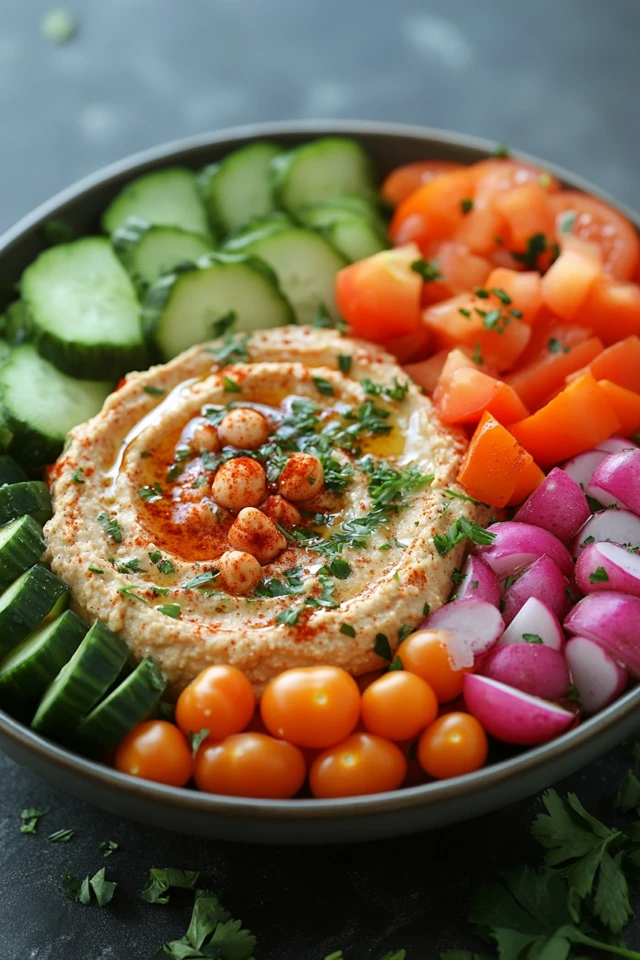
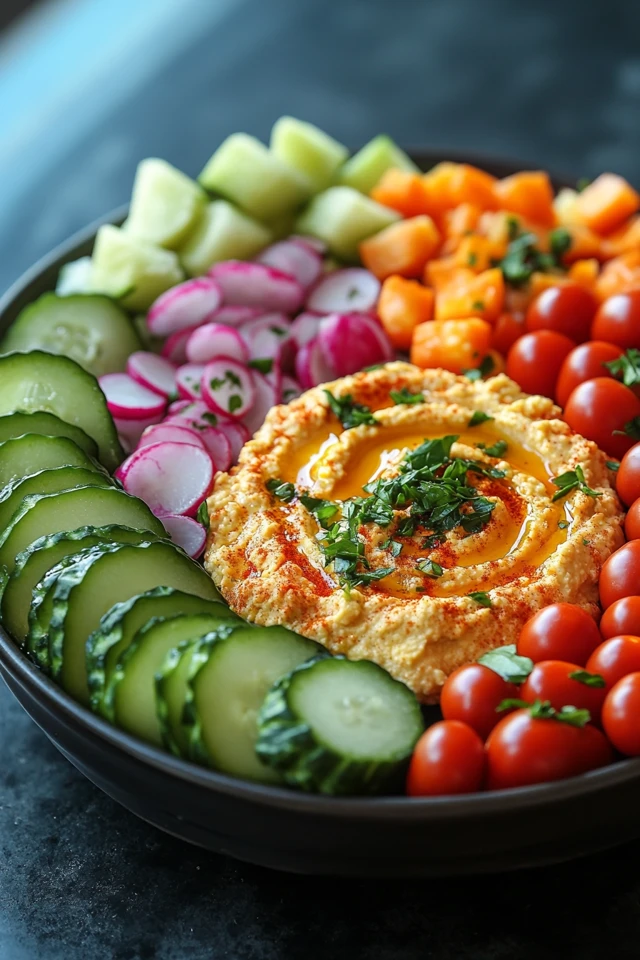
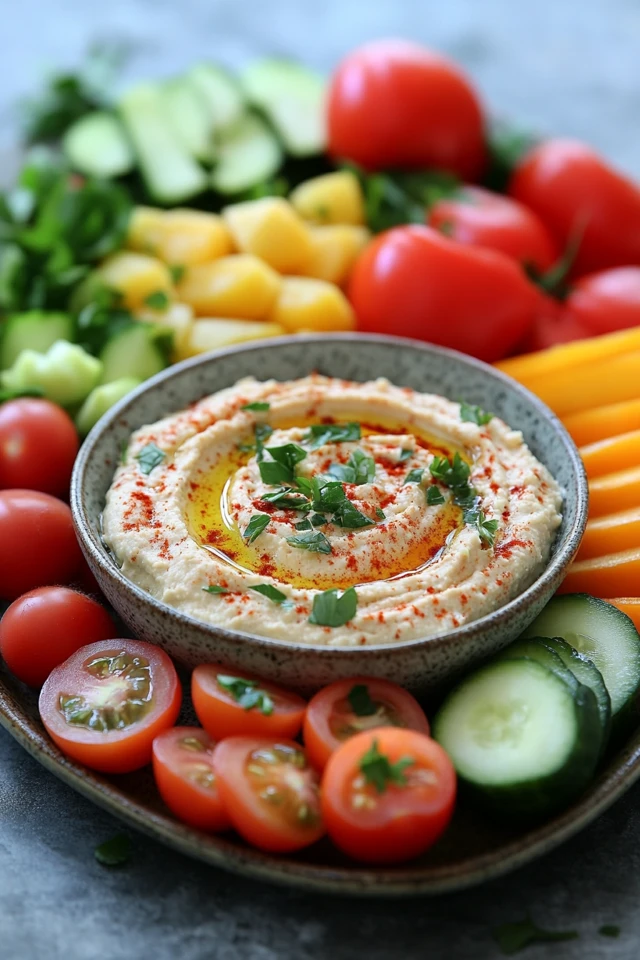
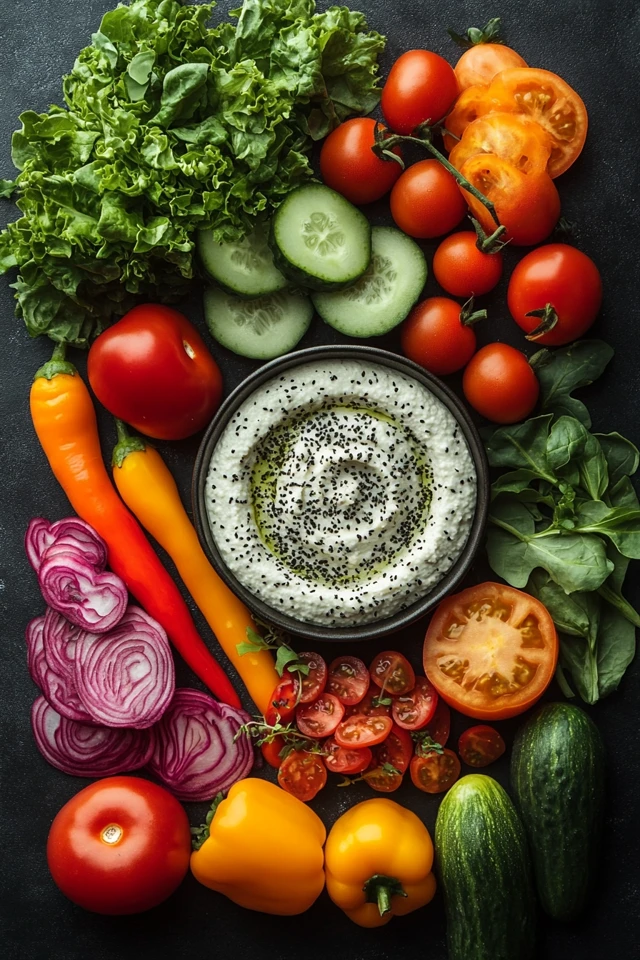
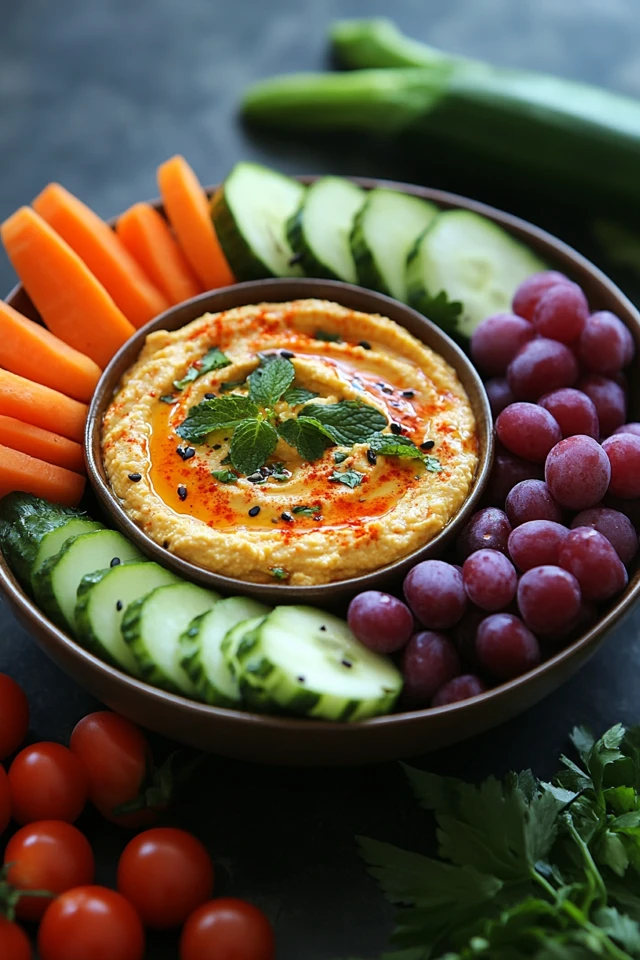
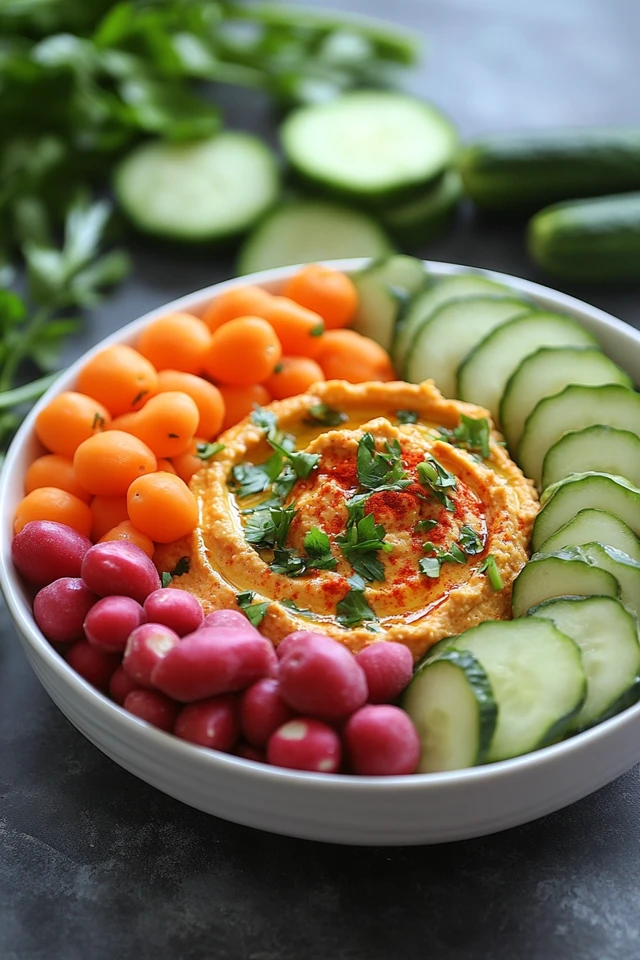
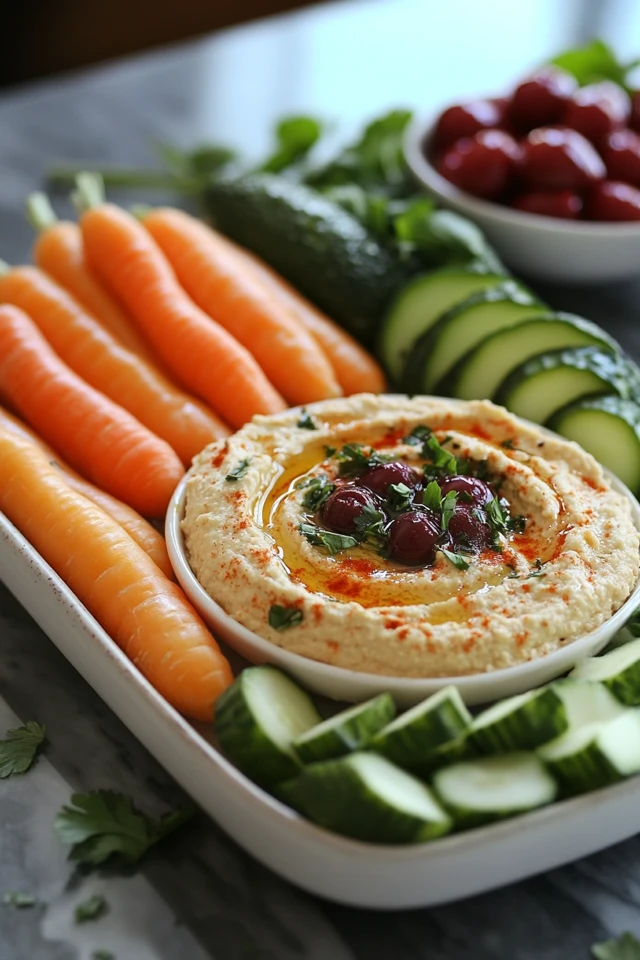
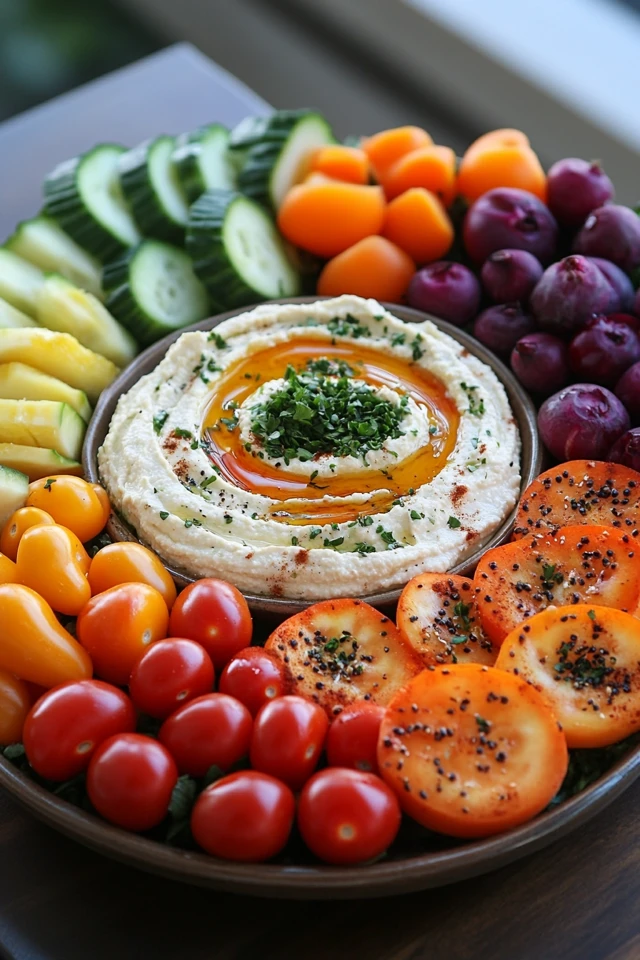
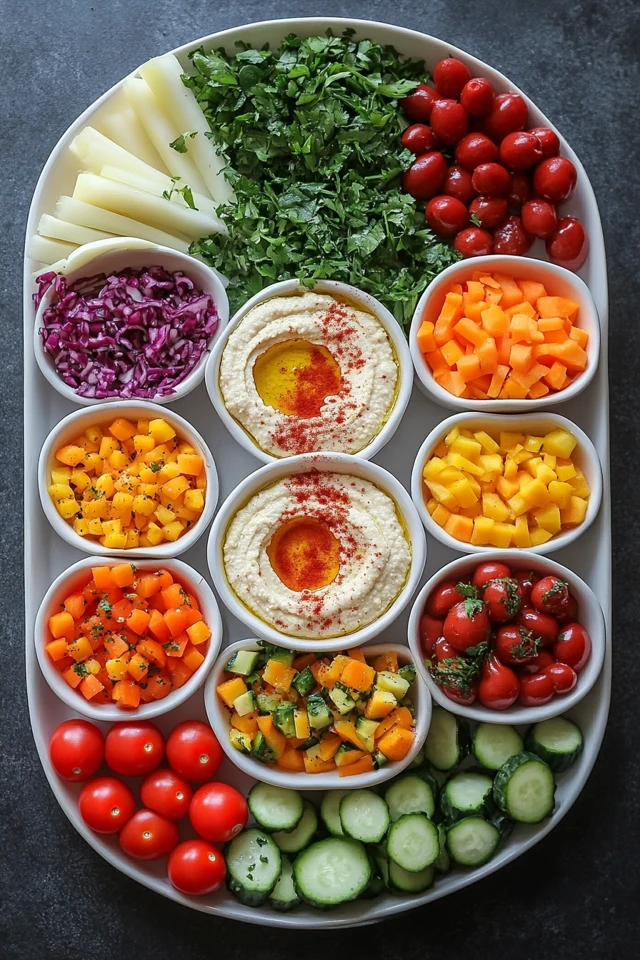
Frequently Asked Questions (FAQs)
1. Can I make this hummus and veggie platter gluten-free?
Absolutely! This platter is naturally gluten-free as long as you ensure that all ingredients, especially store-bought hummus alternatives, are certified gluten-free. Using gluten-free pita bread or crackers as additional dipping options will maintain the gluten-free integrity of the dish.
2. How long can I store the hummus and veggies?
The hummus can be stored in an airtight container in the refrigerator for up to one week. Fresh vegetables are best enjoyed within a few days of preparation to maintain their crispness and freshness. For longer storage, prepare the hummus ahead and keep the veggies fresh by storing them separately.
3. Can I use different types of beans for the hummus?
Yes! While chickpeas are traditional, you can substitute them with other beans like white beans, black beans, or cannellini beans to create unique flavor profiles and textures in your hummus.
4. How can I make the hummus smoother?
For a smoother hummus, peel the chickpeas before blending or use a food processor with a strong motor. Adding more olive oil or a splash of water can also help achieve a creamier consistency. Additionally, blending for a longer period ensures a silky texture.
5. Is this hummus and veggie platter suitable for kids?
Absolutely! The colorful vegetables and creamy hummus make it an appealing and nutritious option for kids. You can customize the platter with their favorite veggies and serve it alongside fun dipping options to encourage healthy snacking.
6. Can I add grains or seeds to the platter?
Yes! Incorporate cooked quinoa, bulgur, or roasted seeds like pumpkin or sunflower seeds to add extra texture and nutritional value to your platter. These additions can enhance the overall balance and make the platter more filling.
7. How do I prevent the vegetables from getting soggy?
To keep the vegetables crisp, ensure they are thoroughly dried after washing. Store them in the refrigerator until ready to serve and avoid covering the platter tightly, which can trap moisture. Serving the hummus and veggies separately until just before eating also helps maintain their freshness.
8. Can I make a flavored hummus?
Absolutely! Experiment with different flavors by adding ingredients like roasted red peppers, sun-dried tomatoes, olives, herbs, or spices like cumin, paprika, or chili flakes to your hummus for a customized flavor experience.
9. What can I serve alongside this hummus and veggie platter?
Enhance your platter by adding complementary items like falafel balls, stuffed grape leaves, vegan cheese slices, or a variety of dips like baba ganoush or tzatziki. These additions can create a more diverse and satisfying appetizer spread.
10. Can I use store-bought hummus instead of making it from scratch?
Yes! If you’re short on time, store-bought hummus can be used. However, making hummus from scratch allows you to control the ingredients and customize the flavors to your liking. For a healthier option, choose hummus brands that use minimal additives and preservatives.
About the Author
Welcome to Vegan & Plant-Based Kitchen! I’m Julio Arco, a passionate vegan chef dedicated to creating delicious, easy-to-make plant-based recipes that nourish both body and soul. Since embracing a vegan lifestyle in 2010, I’ve been on a culinary journey to explore the endless possibilities of plant-based cooking. From vibrant salads to hearty mains and indulgent desserts, my mission is to inspire and empower you to embrace a compassionate and healthy lifestyle through wholesome food.
Join me on this journey as we explore diverse flavors, experiment with fresh ingredients, and celebrate the beauty of plant-based living. Let’s create, share, and enjoy the goodness of vegan cooking together!
Disclaimer: This blog post is intended for informational purposes only. Always consult with a healthcare professional before making significant changes to your diet.

